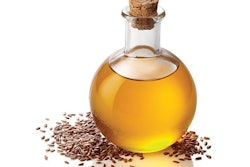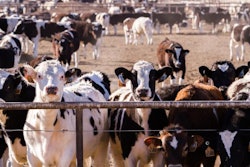
Broilers have a short lifespan during which they consume a high amount of feed, and overfortification with vitamins is the norm
Under natural conditions, it is vitamin deficiency that may be the problem rather than the opposite. Even in commercial broiler production, it is unlikely to observe either a deficiency or hypervitaminosis, and this is because we routinely add vitamin premixes that more than meet basic bird requirements.
Here, however, we will discuss two cases of feeding excess vitamins to broilers. This is important because broilers have a short lifespan during which they consume a relatively high amount of feed, and overfortification with vitamins is rather the norm than the exception.
Mixing errors. The most common, albeit rare, mistake is during premix formulation. This happens either during calculations (for example, how many IU vitamin A exist in my raw material, how many I need in the final feed, what is the inclusion rate of my premix, and then how much of the raw material that carries the vitamin A needs to be added in a ton of premix). Even then, it is not difficult for a decimal point to be misplaced, or the wrong conversion factor be used or divided instead of multiplied, etc. Even when a correct mixing formula is prepared, there is always the risk of having another error during the actual mixing of the premix – especially where this is still done by hand. And, of course, we have the cases where feed professionals deliberately add super high levels of certain vitamins, for a number of reasons, and mainly because if a little is good, then more will be better.
Feeding ingredients already high in certain vitamins. This refers especially to animal-derived products that come from animals that accumulate certain vitamins in their liver. Although this is more of a problem with certain trace minerals, it can also apply to vitamins. And, although birds are rather tolerant in most vitamins, they are not so forgiving when it comes to fat-soluble vitamins, such as A, D and K.
In birds, apart from vitamin-specific problems, the main – or in most cases first and only – symptom is loss of appetite, depressed growth and general lack of thriftiness. As it happens, these are also common symptoms in many vitamin deficiency cases. But, the problems do not stop here. When humans consume high enough amounts of high vitamin-containing animal products, such as liver, then this might become a problem. In fact, in one developed country, the maximum amount of vitamin D fed to animals is regulated by law to avoid human toxicity. And, of course, we should not forget pets that consume organs like liver through their wet pet food daily routine.
So, when it comes to vitamins, it is best to use the right dosage and, even then, it does not hurt to have your premixes analyzed periodically at a lab. I have worked so many years with vitamins that I can assure you, you might be surprised when you compare lab results with what is on the label and quite often this might not be even a deliberate act. Designing a balanced premix is not as easy as many believe.















